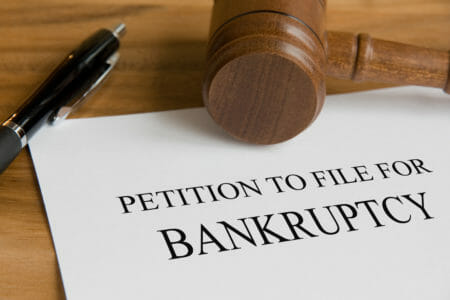Process of Bankruptcy

Being too broke to pay your debts is frustrating enough. Deciding and opting for bankruptcy is even more daunting. If you have decided to go ahead with filing for bankruptcy, you have a lot of factors to consider and decisions to make.
Chief among them is understanding how bankruptcy works, the process and how you should go about it.
So here are the processes to follow in bankruptcy:
- Gather all the vital financial documents such as income (paystubs, tax returns, etc.), expenses, assets and, of course, debts. Assess them in order to have better understanding of your financial situation. These documents will be vital to your attorney or whoever will be part of your bankruptcy process.
- Get an experienced bankrupt attorney (if you can afford one). You can get one through referrals, online directories, or state bar association. Ensure the attorney understands your situation and you are comfortable with him/her.
- Attend bankruptcy counseling. This is compulsory. Credit counseling sessions are part of the bankruptcy process and must be fulfilled under approved agency. The first part of the counseling must be completed at least 180 days before the filing.
- File the bankruptcy. Next step is to file for bankruptcy with the court thereby making it impossible for creditors to harass you for payment. However, the bankruptcy will now appear on your credit report at this point. Mind you, debtors can contest your petition by filing a complaint in the court.
- Liquidation/repayment, depending on the type of bankruptcy. For Chapter 7 bankruptcy, this step will involve assessment and liquidation of the debtor’s valuable assets. But for Chapter 13, it will be time for repayment of stipulated amount of the debt. This will depend on the repayment plan. See comparing Chapter 7 vs. Chapter 13.
- Completion of debtor education. Before the discharge of your debts, you must complete the debtor education session. You can do this online, or seek a bankruptcy education counselor.
- Discharge of debt. This is the final step in the bankruptcy process. Bankruptcy can clear most of your debts and give you relief from creditors. A discharge order legally frees the debtor from all personal liability for the eligible specified debts.
Any advantage to filing bankruptcy?
There are so many myths surrounding bankruptcy. However, not everything about bankruptcy is bad. In fact, it has many advantages.
- Once you declare bankruptcy, ‘automatic stay’ protects you from creditors’ actions to collect their debt. This includes stopping those annoying collection calls as well as garnishments of bank accounts and paychecks!
- You have a second chance at starting all over again. Bankruptcy is not death sentence. It can actually give you a clean bill that allows you to forge ahead with life. In fact, many people have a higher credit score a year after completing bankruptcy discharge than they do prior to filing.
- Bankruptcy can save you your property or business depending on the type of bankruptcy you file.
Disadvantages of bankruptcy
- Bankruptcy can reflect on your credit for long period depending on type of bankruptcy you file. This can lower your credit score too.
- It can adversely affect your chances of getting loans or mortgages and other financial activities.
- Bankruptcy does not erase all of your debts.
If you think you can no longer handle your debts, file for bankruptcy. It may be your saving grace in the end.
